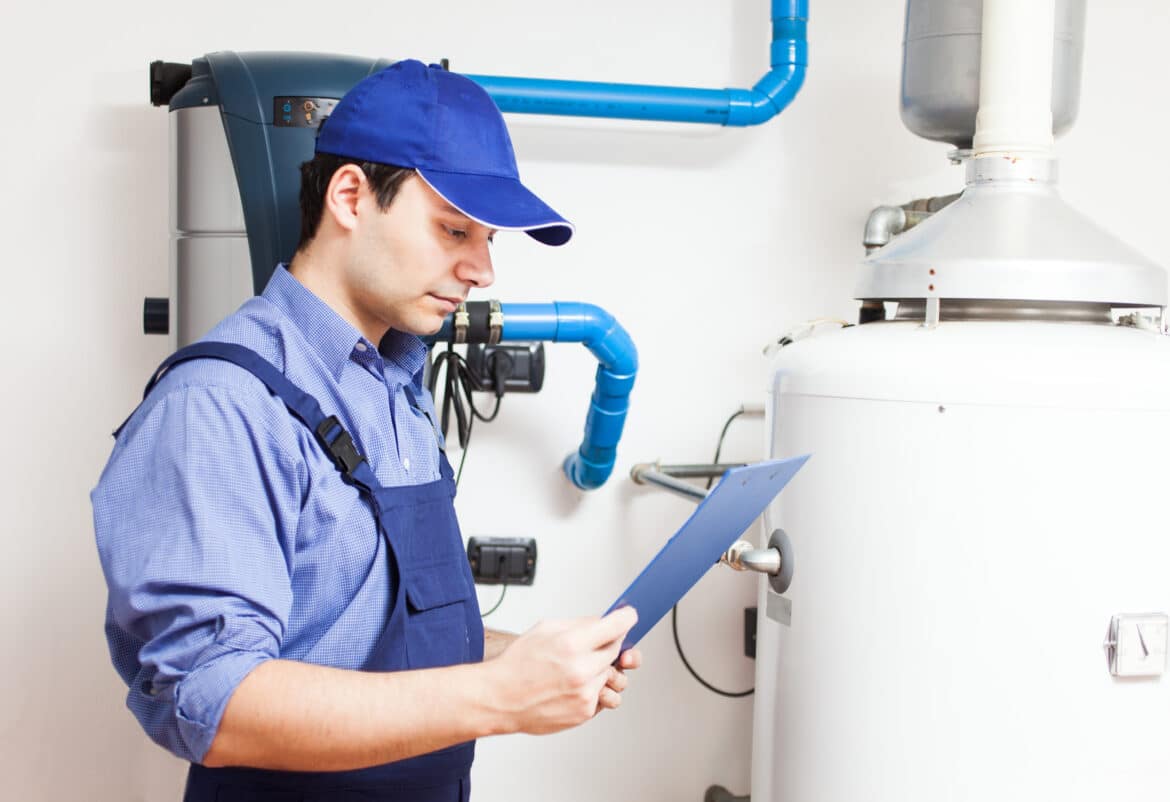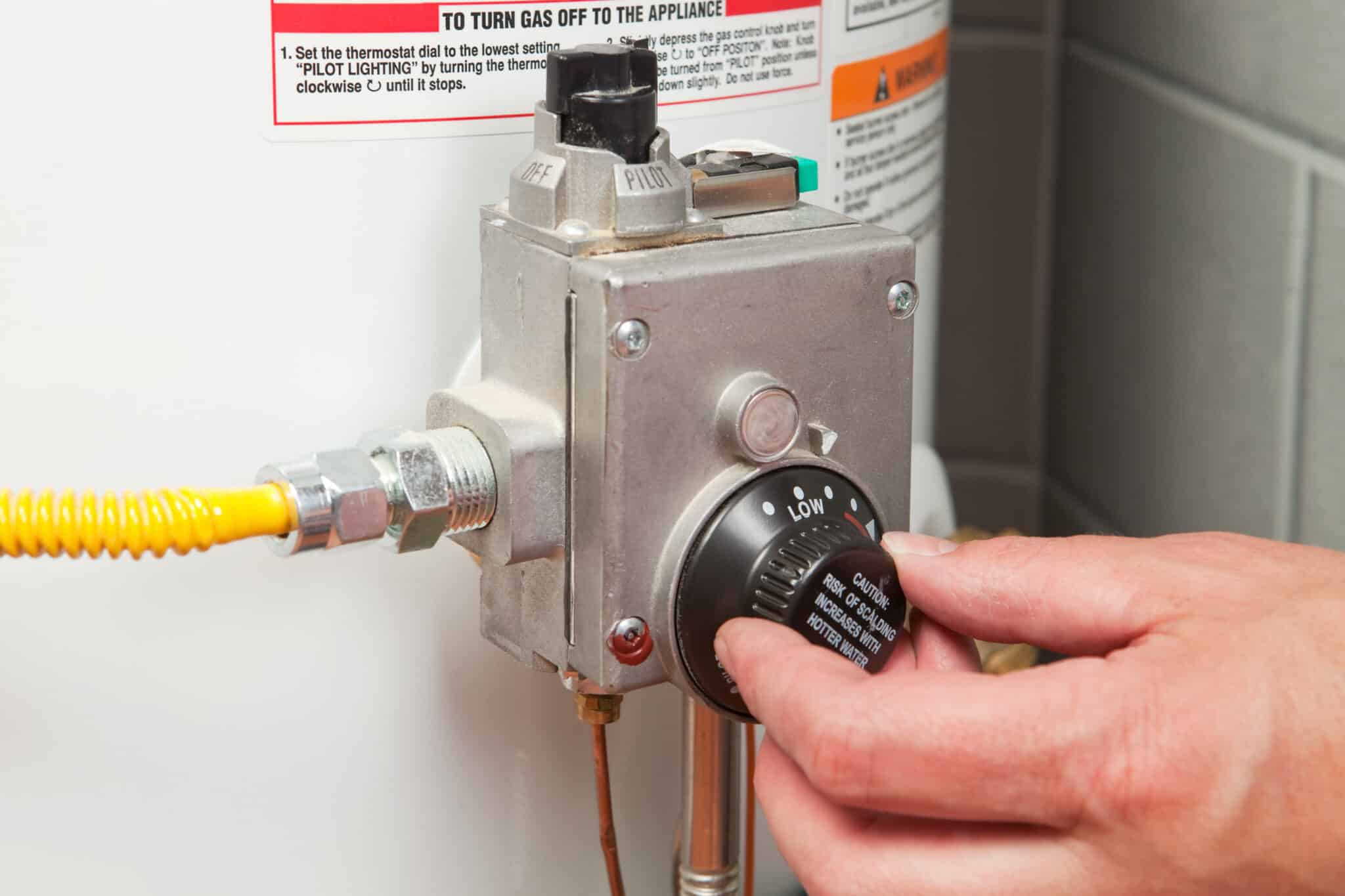
Winter Water Heater Maintenance Checklist
Your water heater is a true winter workhorse, delivering the hot water that keeps your home comfortable. But without a bit of preventive care, it’s vulnerable to breakdowns, inefficiency, and cold showers at the worst times. With a few essential maintenance steps, you can ensure it’s up to the task of winter’s demands. This checklist will guide you through simple but powerful actions—from checking for leaks and rust to insulating pipes—that keep your water heater running smoothly. A little attention now means reliable, energy-efficient warmth all season, saving you from costly repairs and unexpected disruptions.
Inspecting the Water Heater
Winter pushes your water heater to its limits, making a thorough inspection critical to ensuring it’s ready for the season. A detailed check now can mean the difference between cozy comfort and unexpected cold showers. Begin by carefully inspecting the tank, pipes, and connections. Even the smallest leak, the sign of rust, or spot of corrosion can be a red flag that the unit may struggle under the winter workload. By catching these signs early, you can prevent minor issues from escalating into costly repairs or even total breakdowns.
For gas water heaters, focus especially on the burner and surrounding areas. Dust and debris can build up here, reducing airflow and forcing your heater to work harder, which can quickly drive up energy bills and potentially lead to safety risks. Make sure the burner is clean and the exhaust vent is unobstructed; clear ventilation is essential for safe, efficient performance. If you have an electric water heater, check around the heating elements, as dust buildup here can reduce efficiency and put extra strain on the system, increasing the risk of overheating or even failure over time.
This inspection might seem simple, but it’s one of the most effective ways to ensure your water heater operates reliably and efficiently all winter. A small investment of time now can save you from high repair costs, uncomfortable cold spells, and a hike in energy bills. By taking a proactive approach, you’re setting your water heater up for a season of dependable performance, keeping your home warm and your water hot no matter how cold it gets outside.

Flushing the Tank
Flushing the tank is a crucial part of water heater maintenance, especially before winter, when your unit will face increased demand. Over time, sediment and mineral deposits build up at the bottom of the tank, affecting your water heater’s efficiency, raising energy bills, and even reducing its lifespan.
Turn Off the Water Heater
For electric heaters, shut off the power at the circuit breaker. For gas heaters, set the thermostat to the “pilot” setting. This prevents the heater from running during the flush and keeps you safe.
Attach a Garden Hose to the Drain Valve
Locate the drain valve at the bottom of the tank and attach a garden hose to it. Place the other end of the hose in a safe location where the hot, sediment-filled water can drain, such as outside or into a floor drain.
Open the Drain Valve and Flush the Tank
Open the drain valve and let the water flow out of the tank. As it drains, sediment and mineral buildup will be washed away. Allow the water to flow until it runs clear, signaling that most of the sediment has been flushed out. This process may take a few minutes, but it’s well worth the time for improved efficiency.
Close the Drain Valve and Remove the Hose
Once the water is clear, close the drain valve tightly and carefully remove the hose. This ensures the tank is sealed correctly when refilling, preventing any potential leaks.
Refill and Restart the Water Heater
Turn the cold water supply back on to refill the tank. Once the tank is full, restore power to the water heater or adjust the thermostat back to its normal setting for gas heaters.
By flushing your tank annually, you help your water heater maintain efficiency, reduce wear, and avoid energy waste. This simple step helps ensure your heater operates smoothly throughout winter, providing reliable hot water when you need it most.
Testing the Temperature and Pressure Relief (TPR) Valve
Testing your water heater’s Temperature and Pressure Relief (TPR) valve is a crucial step in preparing for winter. The TPR valve is your water heater’s first line of defense against dangerous pressure buildup, automatically releasing excess pressure or temperature to keep the unit safe. A malfunctioning valve not only reduces efficiency but can pose a serious risk. Taking a few minutes now to test it ensures your water heater operates safely and reliably.
Find the TPR Valve
Typically located near the top or side of your water heater, the TPR valve has a small lever and is attached to a discharge pipe that runs down along the side of the tank. This pipe allows excess water to be safely released if pressure inside the tank rises too high.
Position a Bucket Beneath the Discharge Pipe
Before testing, place a bucket under the discharge pipe to catch any water that flows out. This setup prevents spills and makes it easier to observe the water flow, which is a key indicator of the valve’s function.
Lift the Valve Lever Gently
Gently lift the lever on the TPR valve, releasing a small amount of water into the bucket. You should hear a quick, steady flow through the discharge pipe. This indicates that the valve is working as it should, allowing excess pressure to escape. If no water flows or if the lever feels stuck, the valve may be clogged or faulty, and replacement is essential.
Observe and Let the Valve Close
Release the lever and let it snap back into place. Watch the discharge pipe carefully; if water continues to drip after the valve closes, this could mean it’s worn out and needs replacement to ensure safe operation.
Contact a Professional if Needed
If the TPR valve doesn’t respond properly or you’re unsure of its condition, call a professional plumber. Replacing a malfunctioning TPR valve is vital for maintaining the safety and efficiency of your water heater.
Testing the TPR valve is a small but powerful step in water heater maintenance, providing peace of mind and ensuring your water heater can handle the demands of winter safely and efficiently. By taking a few minutes to test this essential safety feature, you’re protecting your home and preparing for a reliable, comfortable season.
Examining the Anode Rod
The anode rod is one of the most critical components in your water heater, yet it often goes unnoticed. This “sacrificial” rod is designed to protect the tank from corrosion by attracting corrosive elements in the water. As it slowly degrades, the anode rod prevents rust from forming on the tank walls, preserving your water heater’s integrity and extending its lifespan. Regularly examining and replacing this rod, if necessary, is essential to keeping your water heater running efficiently, especially during winter when it’s under heavier demand.
Over time, the anode rod naturally wears down as it sacrifices itself to protect the tank. If it becomes too corroded or thin, it can no longer prevent rust from attacking the tank, increasing the risk of leaks and costly repairs. By taking the time to inspect the rod periodically, you can catch it before it reaches this critical point. Replacing a worn-out anode rod is far more cost-effective than dealing with tank corrosion or, worse, a complete water heater replacement.
For areas with hard water, examining the anode rod is even more important, as mineral buildup can accelerate its degradation. Many homeowners find that a magnesium anode rod works well in soft water areas, while an aluminum or aluminum-zinc rod offers better durability for hard water conditions.
Inspecting the anode rod may seem like a small task, but it plays a big role in ensuring your water heater’s performance. By maintaining this vital component, you’ll keep your water heater running smoothly, reduce the risk of unexpected breakdowns, and enjoy dependable hot water all winter long. This simple, preventative measure goes a long way in extending the lifespan and efficiency of your water heater, giving you peace of mind when you need it most.
Insulating the Water Heater and Pipes
Winterizing your home can start with insulating your water heater and pipes, a simple yet effective way to conserve energy. By insulating, you reduce heat loss, helping the water heater maintain its temperature efficiently. This upgrade not only saves on energy costs but also provides added protection against freezing, minimizing risks of burst pipes and expensive repairs. Insulation quickly pays for itself with lower energy bills and improved equipment lifespan.
Benefits of Insulation in Preventing Heat Loss
Insulation minimizes heat loss from the water heater and pipes, which would otherwise lead to wasted energy and increased costs. With proper insulation, standby heat loss can be reduced by up to 45%, enabling the water heater to maintain hot water with less effort. Insulated pipes keep water warmer for longer, reducing energy needed for reheating and improving overall home comfort in colder months.
Materials and Methods for Insulating the Tank and Pipes
Water heater insulation is often straightforward. Fiberglass or foam blankets, called water heater jackets, are affordable and effective at retaining heat. For pipes, foam sleeves are commonly used to insulate exposed sections, especially in unheated areas. These additions are easy to install, available at home improvement stores, and protect your water system against the winter chill, boosting efficiency and comfort.
Adjusting the Thermostat
Adjusting your water heater’s thermostat is a simple, impactful step to maximize energy savings, enhance safety, and prolong the life of your unit. Setting the thermostat at the right temperature helps your water heater operate more efficiently, which is especially beneficial during winter when it’s in constant use.
Boost Energy Efficiency
Setting your water heater’s thermostat to 120°F is recommended for optimal energy savings. This temperature is hot enough for most household needs while preventing the heater from overworking. Even a slight reduction in temperature from higher settings can save up to 10% on energy costs.
Enhance Safety
Higher temperatures increase the risk of scalding, particularly for children and older adults. By lowering the thermostat to 120°F, you reduce this risk without sacrificing comfort, ensuring hot water is safe for everyone in the home.
Extend Water Heater Lifespan
Constantly heating water to high temperatures puts extra strain on your heater, leading to more wear and tear. With a moderate setting, your water heater works less intensely, which can lead to fewer repairs and a longer lifespan.
Ensure Consistency in Winter
In colder months, your water heater may struggle to maintain high temperatures, especially if it’s in an unheated area. Adjusting the thermostat to an efficient setting provides consistent warmth without excessive energy use, giving you reliable hot water all winter long.
A quick thermostat adjustment offers improved efficiency, safety, and durability, helping your water heater perform at its best during winter’s demands.
Scheduling Professional Maintenance
Scheduling professional maintenance for your water heater is one of the smartest steps you can take to ensure uninterrupted hot water and avoid costly repairs, especially as winter puts additional demands on your system. While routine maintenance covers basic tasks, a professional inspection uncovers hidden issues that only an expert can address. Here’s why scheduling a service call is well worth the investment:
Comprehensive System Check
A professional technician will conduct an in-depth inspection, examining the entire water heater for signs of wear, corrosion, or minor leaks that can turn into major problems. This thorough check catches issues early, helping prevent inconvenient breakdowns when you need hot water most.
Sediment Removal for Efficiency
Sediment buildup in your water heater can greatly reduce efficiency, causing it to work harder and increasing your energy costs. A professional flushes the tank, removing this sediment to restore optimal performance and save you money on utility bills.
Anode Rod and Tank Health
The anode rod protects your water heater from rust and corrosion, but it degrades over time. A technician will inspect and replace it if necessary, safeguarding the tank from premature wear. By maintaining the anode rod, you’re actively prolonging the life of your water heater.
Optimized Settings and Energy Savings
During maintenance, professionals can calibrate the thermostat and pressure settings for maximum efficiency, helping your water heater deliver reliable hot water without wasting energy. Lower energy use translates to lower bills, making this service an investment that pays for itself.
Extended Lifespan and Fewer Repairs
Regular professional care prevents minor issues from escalating, extending the lifespan of your water heater and reducing the likelihood of costly repairs or replacement. With annual maintenance, you’re investing in peace of mind, knowing your system is well-prepared for winter’s demands.
A professional service call provides essential benefits, from enhanced safety to energy savings, all of which ensure that your water heater operates smoothly when you need it most. Scheduling this simple step now can make all the difference in maintaining comfort and efficiency throughout the colder months.
Winterizing Tips for Alamo Heights Residents
Winter in Alamo Heights can bring sudden temperature drops, putting your water heater and plumbing at risk. A few simple winterizing steps now can protect your system, avoid costly repairs, and ensure a steady supply of hot water when it’s needed most.
-
Insulate Exposed Pipes
Even mild winter nights can freeze unprotected pipes in garages, attics, and basements, leading to bursts and expensive water damage. Wrapping pipes with foam insulation or heat tape is an easy, effective way to keep them warm and maintain reliable water flow.
-
Wrap Your Water Heater in an Insulation Blanket
Water heaters in unheated spaces lose heat quickly, making them work harder. Adding a water heater blanket cuts standby heat loss by up to 25%, ensuring that water stays warm longer and reducing energy costs.
-
Set the Thermostat for Comfort and Efficiency
Adjust your water heater thermostat to 120°F to strike the right balance between warmth and savings. This setting prevents the heater from overworking, lowering energy use and minimizing wear and tear.
-
Seal Drafts in Unheated Areas
Cold air entering through drafty windows and doors can cool down your water heater and pipes, forcing the heater to work harder. Sealing windows and doors near the heater keeps temperatures steady, reducing strain on the system.
-
Get a Professional Winter Checkup
A pre-winter inspection can make all the difference. A technician will flush out sediment, check the anode rod, and fine-tune your heater for maximum efficiency, ensuring it’s prepared for winter’s demands.
By taking these precautions, Alamo Heights residents can enjoy dependable hot water, lower utility bills, and peace of mind all season long. Winterizing now means a worry-free, comfortable winter.

Frequently Asked Questions (FAQ)
-
How often should I perform water heater maintenance?
It’s recommended to perform maintenance at least once a year. Annual checkups help prevent breakdowns, keep efficiency high, and extend your heater’s lifespan.
-
What are the signs that my water heater needs repair?
Signs include inconsistent water temperatures, reduced hot water supply, unusual noises, and visible leaks. If you notice any of these, call a professional for inspection.
-
Can I perform maintenance myself, or should I hire a professional?
Basic tasks, like checking for leaks, are manageable yourself, but for thorough maintenance, hiring a professional is advisable. They’ll ensure your system runs optimally.
-
How can I improve my water heater’s efficiency during winter?
To boost efficiency, insulate the tank and pipes, set the thermostat to 120°F, and flush the tank to remove sediment.
-
What should I do if my water heater stops working in winter?
First, check the power or pilot light and thermostat. If the issue continues, call a technician to prevent further damage.
Keep your water heater performing at its best this winter with the expert care from bluefrog Plumbing + Drain of San Antonio. Prevent costly repairs and enjoy reliable hot water—contact us today for professional maintenance you can trust.











